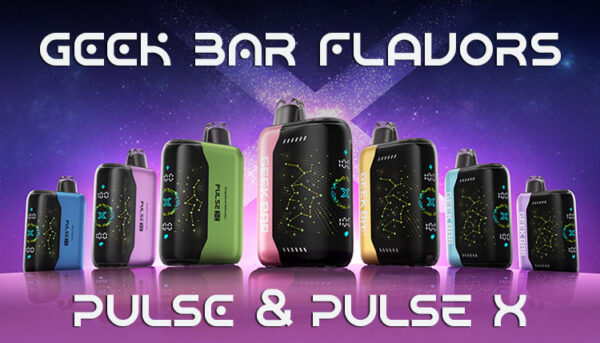Understanding Glycerin and Propylene Glycol
Introduction to Glycerin and Propylene Glycol
Glycerin and propylene glycol (PG) are big players in the vape world. They’re the heart and soul of e-liquids, shaping how they taste and the clouds they make.
Glycerin, or vegetable glycerin (VG) if you’re fancy, comes from plants or is born from propylene. It’s a moisture lover and skin’s best friend, which is why you find it in lotions and soaps (Sanco Industries).
Propylene glycol is whipped up from propylene oxide, clear as day and sweet on the tongue. It’s kind of like glycerin’s edgier cousin—more toxic, but useful in tiny amounts. You’ll see it in stuff like antifreeze because it doesn’t mind the cold (Sanco Industries).
Properties and Composition
VG and PG have their own vibes, making them fit for vapers everywhere.
Glycerin:
- Source: Plants or propylene parade.
- Feel: Think milkshake, not water.
- Taste: Gives you a sugar hug.
- Cost: Pricier ‘cause it’s au naturale.
- Health Note: Doesn’t usually play rough.
Propylene Glycol:
- Source: Straight out of a lab.
- Feel: Smooth flow.
- Taste: Not sugar-free, but diet.
- Cost: Wallet-friendly thanks to labs.
- Health Note: A bit more on the wild side.
| Property | Glycerin (VG) | Propylene Glycol (PG) |
|---|---|---|
| Origin | Plant-based/Synthetic | Lab-made |
| Viscosity | Thick | Thin |
| Taste | Sweet | Less sweet |
| Price | Pricier | Cheaper |
| Safety | Safe | Riskier |
Choosing VG or PG is crucial for vapers since it affects the experience from the throat hit to vapor output. Liquids heavy on VG are great for those who love fog-like clouds, while a mix of VG and PG can tickle your senses just right.
Check out our vape juice ingredients to avoid and diy vape juice recipes for more on what goes in your e-liquid.
Knowing what VG and PG bring to the table helps vapers choose what suits their taste and keeps things safe.
It’s especially important for folks dealing with things like vaping with asthma or worrying about vaping and oral health.
Glycerin vs. Propylene Glycol
Deciding between vegetable glycerin (VG) and propylene glycol (PG) for vaping isn’t as simple as it seems. Let’s break down their origins, safety stuff, and what could make or break your choice.
Natural vs. Synthetic
Vegetable Glycerin (VG):
You’re looking at a sweet, almost syrupy liquid coming straight from plants. That natural vibe has folks pegging it as an organic alternative to keep things clean in the vaping scene. VG’s known for its three -OH groups making it thick and sweet. Real talk, it’s a great choice if you’re all about big fluffy clouds and that smooth hit (Sanco Industries).
Propylene Glycol (PG):
Here’s the lab-made player in the game. It’s been given the green light from the FDA for being safe, but still, it’s got that synthetic label. PG’s all about the technical vibe—less vapor, more throat hit. It’s what keeps disposable pens and cigalikes ticking, doing more with less thanks to its thinness (Ichor Liquid).
Safety Concerns
| Liquid | From Where | Side Effects |
|---|---|---|
| Vegetable Glycerin | Plant Oils | Dry mouth, sore throat, irritation |
| Propylene Glycol | Lab-made | Same but add headaches, nausea |
Vegetable Glycerin:
VG is as chill as they come for your body, rarely setting off any allergies. Perfect for those who find PG a little bit too much to handle (Pod Salt).
Propylene Glycol:
While the FDA gives PG a thumbs up, it’s not quite as laid-back as VG. It breaks down in your body to lactic acid, which sounds like a boring chemistry class, but it just means PG doesn’t overstress your system. No chance of cancer, messing with your genes, or family growth troubles.
Both VG and PG can be a bit annoying if you’re vaping at high temps. Sore throats and dry mouths lead the complaints, but add headaches and other stuff like chest tightness, especially for the PG fans. Sensitivity plays a role, so know what your body says before diving in too deep (Pod Salt).
Curiosity piqued? If you’re up for some mixing magic, our DIY vape juice recipes can guide you through the whole shebang.
Glycerin Characteristics
Getting the hang of vegetable glycerin (VG) is critical for folks dipping their toes into the vaping scene. VG stands out as the go-to for vapers due to its nifty features, setting it apart from its buddy, propylene glycol (PG).
Thickness and Consistency
Picture this: vegetable glycerin being more like a gooey syrup than a runny liquid. It’s this thickness that turns VG into a vapor-making champ. Vapers who love blowing massive clouds are all about VG’s dense vapor production.
| Characteristic | Vegetable Glycerin |
|---|---|
| Consistency | Thick and Gooey |
| Vapor Production | Mega Clouds |
However, this thickness can be a bit of a drag for vaping gadgets. E-liquids with lots of VG take their sweet time soaking into the wicking material, risking those dreaded dry hits if not properly primed. Curious about mastering cloud creation? Check out our cloud chasing guide.
Taste and Price Comparison
VG brings its own sweetness to the table, which jazzes up your vape flavors making them pop. But on the flip side, it could hide those finer flavor notes, so avid flavor chasers might find it a bit overwhelming.
As for your wallet, VG’s usually pricier than PG. That’s because it comes from natural plant oils—think palm or soy. PG, being synthetic, is generally easier on the budget.
| Feature | Vegetable Glycerin | Propylene Glycol |
|---|---|---|
| Taste | Sweet | Plain |
| Price | Pricier | Budget-friendly |
Want to explore flavors that dance perfectly with VG’s sweetness? Swing by our vape flavor collection.
Grasping VG’s qualities—like thickness, taste, and cost—puts vapers in the driver’s seat for a killer vaping experience. Whether you’re on the hunt for cool vaping gear or busting vape myths, we’ve got the info you need to keep you in the loop.
Propylene Glycol Features
Chemical Makeup and Usage
Propylene glycol, often just called PG, is a clever concoction from propylene oxide. If you take a peek at its structure, it sports a couple of -OH groups, earning itself the title of a diol. What you’re looking at is a clear, colorless liquid with a slightly sweet kick. Players from all corners of industry have made PG their go-to buddy. According to Sanco Industries, it’s the Swiss army knife of chemicals, doing jobs like:
- Keeping things moist (humectant)
- Dissolving stuff (solvent)
- Making things last (preservative)
PG’s got a party trick up its sleeve too—it’s chill with the cold, which is why you’ll find it in antifreeze. When it comes to vaping, PG is the hotshot in e-liquid, hanging with vegetable glycerin (VG). Most vape juices have a mix of 80-97% PG and VG. PG knows how to carry flavors and gives vapers that classic “throat hit” similar to a traditional smoke.
Comparing Toxicity to Glycerin
Both PG and its buddy glycerin are pretty safe for us humans, but there’s a bit of difference when you dive into their safety profiles. Glycerin’s the natural charmer in the group, usually coming from plant oils with three -OH groups in tow. It’s all about keeping things smooth and moist, finding its way into foods and skincare products (Sanco Industries).
| Substance | Chemical Composition | Source | Usage | Toxicity |
|---|---|---|---|---|
| Propylene Glycol | Two -OH groups | Synthetic | Humectant, Solvent | Safe overall, but not as safe as glycerin |
| Glycerin | Three -OH groups | Natural/Synthetic | Humectant, Preservative | Non-toxic in its natural state |
PG is seen as generally safe, popping up in low amounts across many products, but it’s got a bit more edge than glycerin. When you blend PG and VG in a vape juice, they put on quite a show. The chemistry lends a sharper, more noticeable experience, plus some extra fog during the exhale (NIH).
For vapers, understanding the dance between glycerin and PG matters. Check out our guide on vaping vs smoking for more on how these ingredients interact with your bod. It also gives you a leg-up on what vape juice ingredients to avoid to ensure a safer puff session.
Applications of Glycerin and Propylene Glycol
Vegetable glycerin (VG) and propylene glycol (PG) are like the all-stars in a variety of industries, popping up in everything from your kitchen cabinet to your favorite vape juice. Let’s explore where you’ll find these handy ingredients.
Everyday Products Usage
You’d be surprised where glycerin and propylene glycol show up in your house. These two are a big deal in food, cosmetics, medicine, and even some not-so-obvious places.
- Propylene Glycol (PG) is a bit of a chameleon. Approved by the FDA for food use, you might spot it in places like:
- Breathing aids, like asthma inhalers
- The minty fresh world of toothpaste
- The creamy realm of margarine and ice cream
- Deodorants, keeping us fresh
- Vegetable Glycerin (VG) doesn’t like to be left out. Coming from veggie oils, it’s a plant-friendly alternative to animal fats, showing up in:
- Cough syrups that ease the rough times
- Chewy candies
- Food preservatives
- Sweet drinks
- Keeping our skin moisturized in cosmetics (Pod Salt)
Influence in Vaping Industry
When it comes to vaping, VG and PG are the real MVPs. They’re the magic behind the e-liquid curtain, each bringing their own unique flavor to the show.
| Property | Vegetable Glycerin (VG) | Propylene Glycol (PG) |
|---|---|---|
| Consistency | Thick like syrup | Thin like water |
| Vapor Production | Big clouds for fog lovers | Lighter clouds |
| Throat Hit | Soft and easy | Packs a punch |
| Flavor Carrying | Slightly soft flavors | Bolder, brighter tastes |
- Vegetable Glycerin (VG) rolls out the big guns for vapor. It’s all about those epic clouds, making it a hit in cloud chasing competitions. If you like your drinks sweet, VG’s natural sweetness is right up your alley, though it might soften the taste a bit. It’s gentle on the throat, perfect for vape fans who want it smooth.
- Propylene Glycol (PG) is the taste bud’s best friend, turning up the volume on flavors. Its strong throat kick could remind you of puffing on old-school ciggies, ideal for ex-smokers making the switch. Its water-like nature also helps avoid leaky pen issues.
The good news? Both VG and PG are green-lighted by the experts at places like the FDA and the UK’s MHRA. Deciding between VG and PG depends on whether you’re chasing clouds or flavor hits. If you’re curious how these affect your vaping experience, check out more on vaping vs smoking.
Effects of PG and VG in Vaping
Deciding between vegetable glycerin (VG) and propylene glycol (PG) in your vape? It’s all about that inhale sensation and throat punch to make the best pick for you.
Inhalation Sensations
The buzzword here is “feel.” How does it hit when you take that draw from your vape? PG and VG each have their quirks. PG’s got a bit of punch and intensifies flavors. But, heads up, some folks might have a bit of a tizzy with PG, causing skin flare-ups or a pounding headache. No thanks to allergies, right? (Ichor Liquid).
Then there’s VG, the chill cousin. It slides down smooth and makes clouds you can really show off. If you’re all about those big, fluffy plumes, VG’s your buddy (NIH).
| Stuff | How It Feels | Might Bug You With |
|---|---|---|
| Propylene Glycol (PG) | Feels like a throat punch | Possible itchy skin, rashes, ouch head |
| Vegetable Glycerin (VG) | Smooth operator | Less likely to trigger those annoying reactions, epic clouds |
Throat Hit and Airway Effects
You know the feel of a solid throat hit? PG’s like the strong coffee of vaping—intense but satisfying, perfect if you’re ditching cigarettes and want a similar hit. But too much PG could feel like sandpaper on sensitive throats.
VG’s like a gentle caress—soft and rich. If PG feels like too much, VG might be your jam. It’s thick, almost like syrup, giving you a richer taste and experience without the scratchiness (Ichor Liquid).
If PG’s giving you grief, maybe VG’s your out. For those diving deeper, you might wanna peek at our pieces on vaping with asthma, vaping and oral health, and how to quit vaping for some handy info.
Tuning into how PG and VG interact with your senses is key to picking the right juice for both enjoyment and well-being. Curious about what’s swimming in those bottles? Our vape juice ingredients to avoid guide might be just what you’re looking for.
Allergies and Leaking Issues
Side Effects and Responses
When you’re puffing on vape products with propylene glycol (PG) and vegetable glycerin (VG), you might run into some annoying side effects. Common complaints among users include scratchy throats, desert-dry mouths, or cranky noses and eyes, particularly at sizzling vape temps. You can often dodge these hassles by tweaking the temperature setting or swapping out the e-liquid flavor.
| Side Effect | Frequency |
|---|---|
| Sore Throat | High |
| Dry Mouth | High |
| Irritated Nose or Eyes | Moderate |
| Headaches | Moderate |
| Nausea | Low |
| Coughing | Moderate |
| Chest Tightness | Low |
| Congestion | Low |
Source: My Vapery
Everyone’s got their quirks, and some folks are more sensitive to PG than others. If that’s you, switching to e-liquids heavy on the VG might help smooth things over. Watch out for sketchy e-liquids to keep those sneaky allergies at bay and hit up vape juice ingredients to avoid. Need tips on side effect management? Dive into our guide on vaping and allergies.
Temperature Impact on VG and PG
The thickness of VG and PG juices changes with the heat, playing a bit of a role in how they behave when you’re vaping. VG’s like syrup—it’s thick. PG’s more like water—it’s runny (Ichor Liquid). So if juices were superheroes, PG would be the one prone to leaking, especially when it’s warm.
| E-Liquid | Consistency | Leak Risk |
|---|---|---|
| VG | Thick | Low |
| PG | Thin | High |
Source: Ichor Liquid
Warm weather’s like kryptonite for PG juices, making them more likely to spill. Therefore, many vapers lean on VG-rich mixes in the summer months (Ichor Liquid). Get the lowdown on how temps mess with your juice in our piece on temperature control vaping.
Switching up the heat settings can also ease up those bothersome headaches, nausea, coughs, and tight chests (My Vapery). Making sure your vape gear is running at the right heat stops your juice from overcooking, which keeps bad vibes at bay.
Knowing your VG from your PG and what temperature does to them can really upgrade your vape game, keeping it safe and chill. Whether you’re curious about vaping with asthma or after the best e-liquids for vaping, understanding how heat and what goes in your vape affects the experience helps you stay ahead of the game.
Safety and Regulations
Alright, let’s cut to the chase. When you’re puffing away on your favorite vape, you gotta know what’s inside—especially when it comes to vegetable glycerin and propylene glycol. They’ve been given the thumbs up by those folks who make the rules.
FDA and MHRA Approval
Vegetable glycerin (VG) and propylene glycol (PG) have been poked and prodded by health bigwigs, and guess what? They passed the test.
The US Food and Drug Administration (FDA) says VG and PG are A-OK for munching, sipping, and… puffing. VG’s like a culinary chameleon, popping up in everything from tasty treats to the stuff you slap on your face. PG’s a busy little thing too, dabbling in food, cosmetics, meds, and even some gnarly industrial products (Pod Salt).
| Compound | FDA Approval | Use in Industries |
|---|---|---|
| Vegetable Glycerin (VG) | Absolutely | Snacks, Beauty Potions, Pills, Drinks |
| Propylene Glycol (PG) | Yep | Food, Beauty Glam, Meds, Industrial Stuff |
Across the pond, the UK’s Medicines and Healthcare products Regulatory Agency (MHRA) gives these ingredients the nod for safe human enjoyment. Our friends in the EU are cool with them too, even for vape gear (My Vapery).
Wanna dig deeper? Check out our piece on how VG and PG romp around in vaping and oral health.
Considerations for Safety
But hey, don’t toss your brain out the window—keep these safety pointers in mind with VG and PG.
Toxicity Levels:
No need to freak out—VG and PG aren’t gonna poison you when vaped correctly. PG breaks down into lactic acid, minding its business without messing with your genes or sweet-talkin’ cancer (My Vapery).
Inhalation Effects:
Breathe it in and feel the difference: VG gives you that nice, thick, fluffy vapor, while PG hits like you’re back on the tobacco train. Pay attention to your body’s whispers, and maybe give our articles on vaping with asthma or vaping myths debunked a gander.
Allergic Reactions:
Some folks might break out in hives or sneeze like nobody’s business. If that’s you, keep an eye out for symptoms and hit up a doc if things go south. More on this in our vaping and allergies guide.
Proper Handling and Storage:
Treat your juice right—store it cool, and keep it classy. Hotter than a summer day? That could tweak your VG and PG, turning them into a party crasher.
Regulatory Compliance:
For any vape entrepreneurs reading this, keep within the lane. Make sure VG and PG hail from legit sources to avoid any sticky situations.
Bottom line, VG and PG are all good according to the FDA, MHRA, and friends, but staying informed and handling them wisely are the keys to happy vaping. For scoops on vaping in public places and more, browse our loaded guides and articles.
Particle Emission Factors
Let’s dive into the nitty-gritty of vaping and what makes those little clouds more or less dirty. We’ve got nicotine and that PG/VG ratio doing a dance that impacts just how many particles get puffed out.
Nicotine’s Role
Nicotine is like the secret sauce in e-liquids, but it can’t keep hiding its effect on particle emissions. A deep dive into some nerdy science (shout out to NCBI for the data) shows us the real score: mix in nicotine with your juice and bam, you’re looking at a 33% drop in particles buzzing around in each puff. In plain numbers, all tested juices put out about 2.5 x 10^7 particles as nicotine gets chummy, and leaves PM2.5 at 113 micrograms per puff. Here’s how the numbers stack up:
| E-liquid Type | PNC (particles/puff) | PM2.5 (μg/puff) |
|---|---|---|
| With Nicotine | 1.7 x 10^7 | 75.71 |
| Nicotine-free | 2.5 x 10^7 | 113 |
Breaking Down Particle Loss
Now, let’s talk about how particles disappear, like your socks in the dryer. The PG/VG mix changes the game again. For vapors skipping the nicotine, boosting the PG/VG level means more particles get lost at sea. But surprise! Bring nicotine back in, and it’s a different story: increased PG/VG ratio actually cuts down on the loss rates.
Check out how it shakes down:
| E-liquid Type | PG/VG Blend | PM2.5 Loss Rate (h−1) | PNC Loss Rate (h−1) |
|---|---|---|---|
| No Nicotine | High PG/VG | 6.0 – 7.0 | 1.0 – 1.2 |
| With Nicotine | High PG/VG | 4.4 – 5.0 | 0.6 – 0.8 |
See, it’s not just about blowing rings anymore; it’s about what gets left behind. So, whether you’re comparing glycerin with glycol or just keeping tabs on the dos and don’ts of vape safety, knowing what’s in that puff keeps it smart.
And for those times when you need to chew over more than just the steam, we’ve got your back with topics like vaping and asthma or vaping for expectant mothers. Keep it informed.









